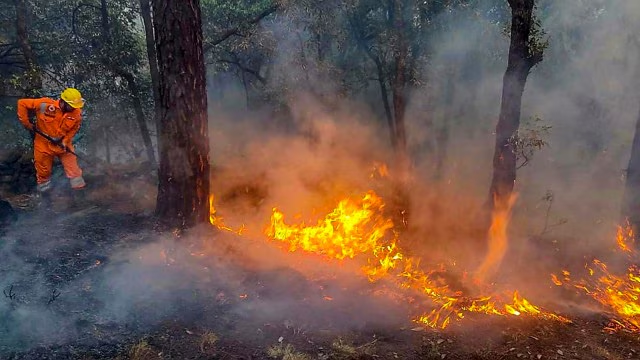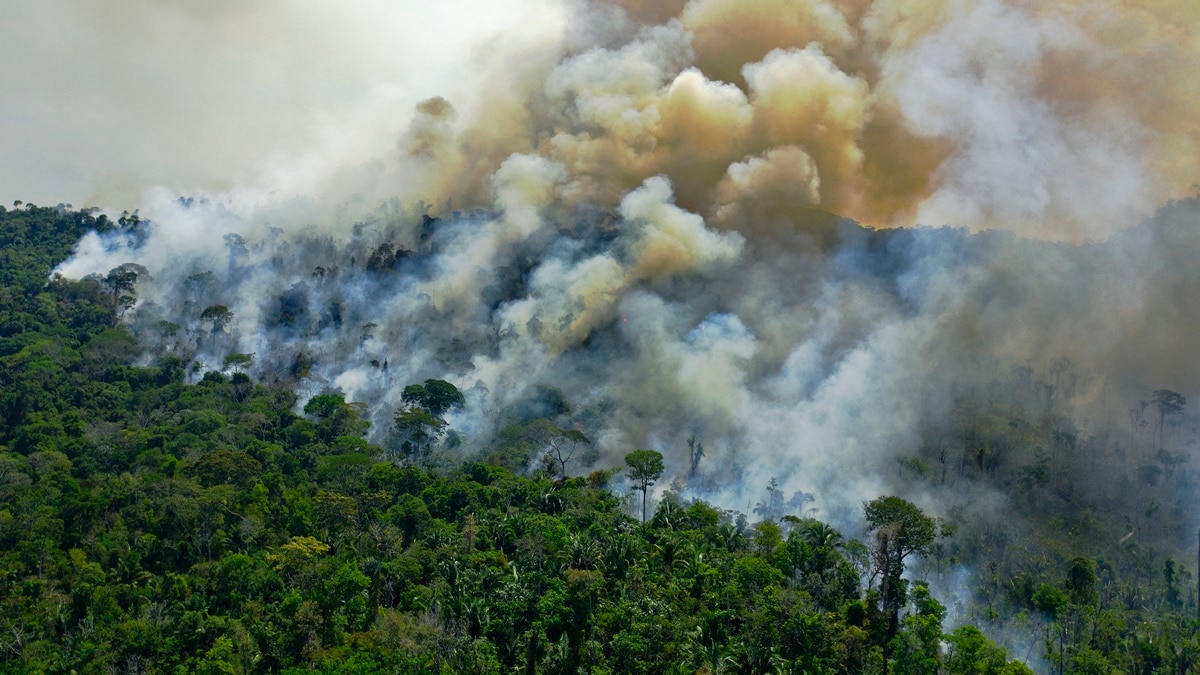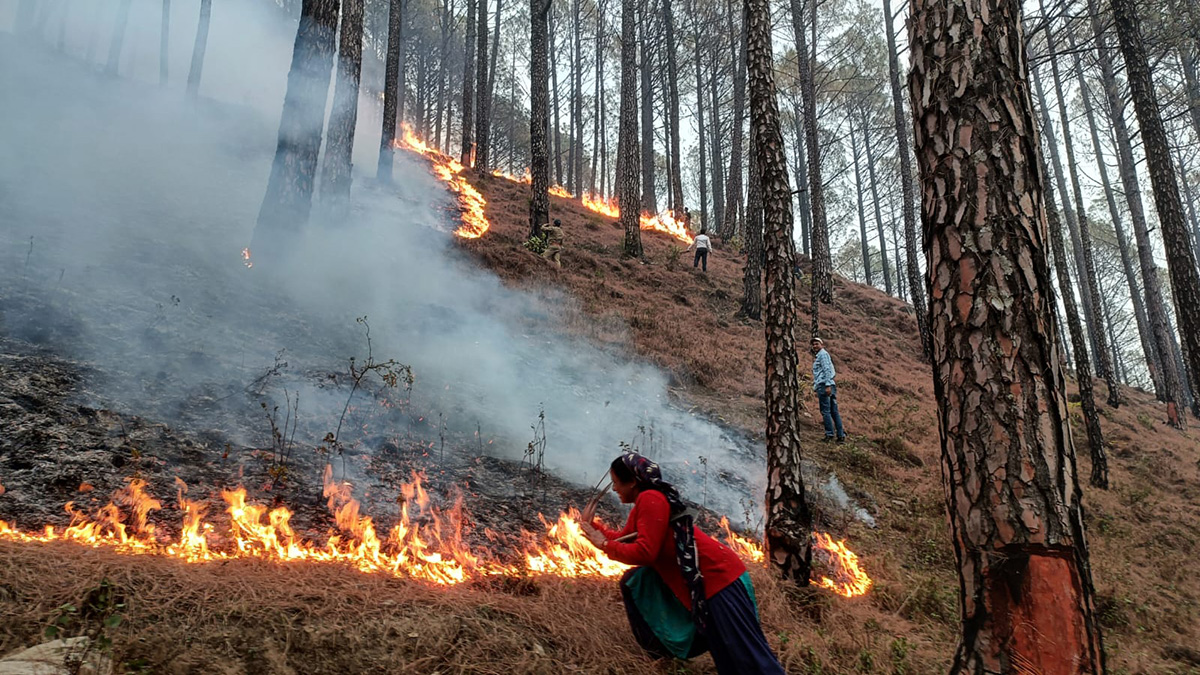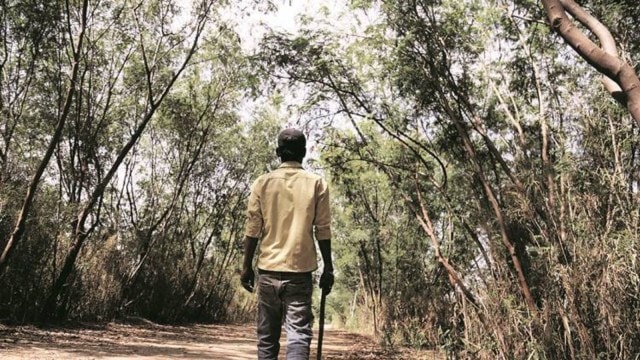Why Are We Letting Our Forests Burn? With Recent Wildfires In Uttarakhand And Simlipal, What’s Next To Ignite If Authorities Don’t Act?

What are Wildfires?
Wildfires or forest fires are known as Wildfires. They occur naturally and due to human causes; they may begin in different parts of the world and in grasslands, forests, or any other habitat where flammable vegetation is found. Forest fires vary widely in size and intensity, from small blazes to large conflagrations that sweep through vast areas, indiscriminately consuming all they encounter.

Lightning during thunderstorms is a significant cause of forest fires: when it strikes, it can easily set ablaze any dry leaves or twigs in its vicinity. However, such acts of nature pale in comparison to the number of wildfires started due to human intervention worldwide. Among the common practices that can lead to forest fires include intentional arson, campfires plus industrial operation and burning of agricultural land alongside unattended cigarette butts.
Winds, high temperatures, low humidity, and dry weather cause forest fires. They are difficult to put out for firefighters and rescue operators because they tend to spread very quickly and are almost instantly fatal.
In addition to the loss of biodiversity and destruction caused by forest fires (as they can completely wipe out an entire ecosystem), wildfires also disrupt wildlife habitats plus interfere with natural processes like water purification and nutrient cycling. Apart from these implications, air pollution and climate change are exacerbated by wildfires that release large amounts of particulate matter as well as greenhouse gases into the atmosphere.
The World Wildlife Fund (WWF) estimates that fires harm 350 million hectares of forest annually, resulting in long-term economic and ecological damage. Every year, wildfires in the United States of America alone cause billions of dollars worth of damage to property, a fall in tourism, a loss in forest revenue, and firefighting costs.
The condition is that the fires in the forest must be stopped or controlled immediately; this would require preventive measures against wildfires, as well as the increased ability of inhabitants living near fire sources, as well as the resilience of ecosystems themselves. A handful of factors that play a role in initiating forest fires include:
(1) Lightning strikes, which can ignite dry vegetation.
(2) Human activities, such as arson or carelessly discarded cigarette butts.
(3) Drought conditions create a matchbox out of forests waiting only for a spark to erupt into an inferno.
Both natural and artificial factors can initiate forest fires, and their origin can significantly alter the global ecological scenario and the severity of wildfires. Some natural sources that can start a forest fire include volcanic eruptions, lightning strikes, and spontaneous combustion.
Lightning is one of the major causes of wildfires. It occurs very frequently in some areas due to thunderstorms; when it strikes dry grass under specific conditions (wind, weather), fires can spread rapidly within seconds.
However, most wildfires worldwide are caused due to human interference in the ecosystem. Some of the most common causes of wildlife fires are:
-
Stubble burning
Farmers clear ground for cultivation by burning the crop residual or controlled burning of farms, a method that, under some circumstances, can turn into uncontrollable wildfires.
-
Industrial operations
Hot work processes, malfunctioning equipment, or rising sparks during industrial operations, including mining, forestry, and construction, might unintentionally start fires.
-
Thrown away cigarette butts
Cigarettes can catch fire and ignite dried grass or plants, particularly in drought-prone regions that experience extreme heat waves.
-
Campfires
Inadequately putting out campfires or embers from burning debris can ignite wildfires, especially in wilderness and areas frequented by tourists or campers.
-
Intentional Arson
Arsonists purposefully start fires to fulfill a variety of unfilled motives that can include profit-seeking schemes, vandalism, revenge or retaliation.
-
Climate change
Climate change increases the chances of forest fires by bringing about hotter, drier weather that makes fires easier to start and spread. Because of altered rainfall patterns, prolonged droughts, and shifts in temperature, wildfires are occurring more frequently, with greater intensity, and for extended periods worldwide.
Cases of forest fires across the globe
NIFC, which stands for National Interagency Fire Center, estimates that human activities account for about 87% of Western countries’ wildfires. This emphasizes the detrimental effects of human presence in ecosystems and fire outbreaks. Globally, forest fires have highly impacted both the environment and different geographical settings. Such wildfires have destroyed large tracts of land, causing a loss of biodiversity and disturbance of ecological balance.
1. Amazon Rainforest

- In 2019, the Amazon rainforest, often referred to as the ‘lungs of the Earth,’ experienced a very destructive forest fire. The cause was widespread deforestation and rapid land clearing, which made the area more vulnerable to wildfires.
- According to the data from Brazil’s National Institute for Space Research (INPE), an 84% increase in wildfires in the Brazilian Amazon in 2019 compared to 2018 was primarily caused by land clearing and agricultural burning that was internationally scrutinized for garnering global attention.
2. Australian Bushfire

- One of the worst bushfires in Australian history occurred in 2019–2020. Strong winds, high temperatures, and a protracted drought caused the wildfires to destroy large portions of the continent, resulting in the loss of homes, wildlife, and human lives.
- Almost 3 billion animals perished as a result of the wildfires, smoke stars, vacations, and burnin,g which destroyed an estimated 18 hectares of land, according to the Australian Broadcasting Corporation (ABC).
- The devastating effects of the Australian bushfires on the environment resulted in the extinction of entire species, causing irreversible harm to the region’s entire ecosystem.
3. US Fires

- Due to several factors, including unprofessionalism on the part of forest management staff, urbanization of wildlife-supported regions, and climate change, wildfires have become more frequent and fatal in the United States in recent years.
- The National Interagency Fire Center (NIFC) has reported that the ten-year average of acres burned in wildfires has more than doubled since the 1980s. This has underscored the increasing threat posed by uncontrolled wildlife fires.
- American states like California, Oregon, and Washington had devastating wildfire seasons in 2020. The fires burned almost millions of acres of land, destroying thousands of homes and raising smoke levels in urban cities and surrounding areas.
The high fatality and severity of the wildlife fires highlighted the pressing need for strategic plans for managing forest fires, acting against climate change in combatting wildfires and saving the planet.
With global warming on the rise, the chances of wildlife fires are increasing. The need of the hour is to take proactive measures to build resilience, lessen susceptibility, and protect humankind and ecosystems from the destructive effects of these uncontrolled fires. Innovation in policy, scientific research, and international cooperation is required to tackle this global issue and protect the environment for generations to come.
Cases of forest fires in India
Wildfires are a common occurrence in Indian forests, raging throughout the year in various states and regions. The most vulnerable forests in India are the Western Ghats and the foothills of the Himalayas. Humanities, high temperatures, and defiance are the main factors leading to wildfires.
Recent forest fires have advocated concern for the dangers faced by the flora, fauna, human life, immigration, air quality, and stability of the environment. The states of Uttarakhand, Himachal Pradesh, and Maharashtra have been witness to the most destructive wildfires in India. In 2020, FSI reported that the data showed an alarming number of 63,000 forest fire incidents recorded in India during 2020, impacting more than 3.7 lakh hectares of forested land.
1. Uttarakhand forest fire
- Due to its terrain, dense trees and dry weather, the north of Uttarakhand remains a major victim of forest fire. The state’s wooded areas, including the Himalayan region’s pine and oak woods, are particularly vulnerable to wildfires, which can spread very quickly over the steep hills and areas that can be accessed with great difficulty.
- According to the Uttarakhand Forest Department, over 1,500 forest fires were reported in the state of Uttarakhand in 2020, damaging about 2,400 hectares of forested area in the region. These fires also threatened the livelihoods and living conditions of rural communities and destroyed ecosystems and wildlife habitats.
- The 2024 forest fires in Uttarakhand have served as a major eye-opener to India’s escalating wildfire issue, which has prompted serious concern about the government’s lack of credibility to counter this issue.
- The wildfires, which started in early November 2023, destroyed about 1,145 hectares of forest land in the region and caused substantial environmental and economic harm, leaving the area destroyed.
)
- A number of natural and artificial factors are responsible for this, including extended dry periods, rising temperatures, and the buildup of extremely combustible pine needles found in the coniferous forests of Uttarakhand, which have been held responsible for these wildfires.
- The chronology of the forest fire cases in Uttarakhand shows a whole pattern of increasingly serious incidents.
- By the beginning of May 2024, over 910 fire incidents had been reported in the state, with major wildfires in areas like Pithoragarh, Almora, and Nainital. Recreational activities in Nainital, like boating in the town’s renowned lake, Naini Lake, were temporarily suspended due to the fires that dangerously engulfed the neighborhood areas.
- The Indian Army and Air Force also assisted the firefighters in extinguishing the rapidly spread fire, and they were responsible for providing aid to the injured.
- The state’s inadequate response and lack of resources to curb the wildfires has drawn criticism despite the seriousness of the accident. The Supreme Court of India voiced its disapproval of the Uttarakhand government’s “lackadaisical” fire management strategy.
- One major concern was the use of forest officers for Lok Sabha election work, even though the Election Commission had granted an exemption, placing an additional burden on the firefighters.
- The Supreme Court instructed the Uttarakhand Chief Secretary to explain the numerous openings in the forest department and the causes of the mishandling.
- A major contributing factor to the crisis was financial restrictions. The Center only provided ₹3.15 crore for forest fire management, which was insufficient given the size of the fires, despite the Uttarakhand government’s request for ₹10 crore.
- This lack of funds made it difficult to put comprehensive fire control plans into place and purchase the equipment required for fighting fires.
- Out of the more than 300 wildfires registered in the country over the same period, 280 were solely reported in the state of Uttarakhand. The collection of extremely combustible pine needles has been recognized as the main culprit.
- The Uttarakhand government launched a campaign to encourage people to gather pine needles for a set price in an effort to lessen this, and 2,300 metric tonnes have been collected so far this year alone. After that, these pine needles are processed to make pellets to be used for a plethora of other things.
- The forest fires in Uttarakhand highlight the critical need for a more organized and resource-rich strategy for managing wildfires. To prevent further accidents, the fire department should be allocated more funding, and firefighters should receive proper training to counter such tragedies.
- Authorities must move quickly to save the area’s forests and towns from the destructive effects of wildfires as climate change continues to increase the risk of fires.
2. Simplipal Forest Fire
- In February 2021, Simlipal National Tiger Reserve in India’s Odisha state experienced one of the biggest forest fires in the country’s history.
- It was caused by strong winds, dry conditions, and human interference that made sure it spread quickly throughout much of the park but was not so fast as not to leave behind any area of the reserve untouched by flames, which ultimately put at risk all protected areas and living organisms inside them becoming extinct soon enough if nothing is done about these matters now.
- The fire burned with such intensity because there were many dry leaves on trees (which are very flammable) and bushes (also extremely inflammable), so dry that their stems crackled when stepped upon; this continued for weeks, posing a severe threat to delicate ecosystems found within this sanctuary designed specifically for protecting wild animals.
- The Simlipal forest fire disaster, which brought to light the need for improved forest fire management strategies and community conservation programs, has raised concerns and attention from conservationists, environmentalists and legislators.
- The fire raised concerns about the effectiveness of existing controls and suppression techniques to mitigate forest fires’ effects on sensitive ecosystems. It also had a major negative impact on park flora and fauna.

- Authorities conducted studies in the wake of the fire to identify the causes and aggravating factors, such as illicit logging, human encroachment, and dry conditions brought on by climate change.
- India’s rich natural heritage and biodiversity are increasingly at risk from wildfires. As a result of climate change exacerbating drought conditions and encouraging extreme weather events, it is anticipated that the risk of forest fires will increase in the years to come.
- For this reason, preventive measures are crucial to strengthening forest fire control capabilities and increasing resilience in fire-prone areas. Following the Simlipal disaster, officials emphasized the importance of early detection systems, sustainable land management practices, and community involvement in preventing and reducing the effects of wildfires.
- However, concerted efforts and action at the local, regional, and national levels are needed to address the root causes of forest fires and preserve India’s forests for future generations.
3. Dzukou Valley forest fire
- In March 2020, a large wildfire broke out in Dzukou Valley, a biodiversity hotspot situated on the boundary between Nagaland and Manipur.
- The fire burned across the untouched forest cover, threatening indigenous flora that included rare orchid species and fauna.

- The fire, which was thought to have started due to human activity, brought attention to the necessity of stepped-up conservation efforts and neighborhood-based programs to safeguard such inhabited ecosystems against wildfires.
4. Bandipur forest fire
- Many wildlife species, including endangered elephant and tiger populations, were put in jeopardy when a large forest fire broke out in the Karnataka reserve of Bandipur Tiger Reserve in February 2017.

- Forest officials, locals, and firefighters worked day and night to contain the fire and minimize its impact on the reserve’s biodiversity and ecosystems.
The Indian government has implemented several initiatives to prevent, detect, and put out wildfires in response to the expanding forest fire threat. These include deploying a trained team of firefighters and equipment during the wildfire season, as well as early warning systems and community-based fire management efforts.
Nonetheless, obstacles persist in efficiently handling forest fires, such as insufficient financial backing, restricted assets, and deficiencies in cooperation among governmental bodies and interested parties. Sustained initiatives to improve public awareness, support sustainable land-use practices, and fortify wildfire control capacities are necessary to counter these ecological challenges.
The risk of wildfires is expected to rise as India’s urbanization and expansion into wooded areas continue, underscoring the necessity of taking preventative steps to reduce the risk of fires, safeguard ecosystems, and guarantee the security and well-being of communities residing in fire-prone areas.
India can protect its natural heritage and increase its ability to withstand the growing threat of wildfires by giving priority to the conservation and management of wildfires.
Administrative laws to curb wildfires
A thorough legal framework that regulates prevention, detection, suppression, and recovery operations is necessary for effective forest fire management. To manage the threat of forest fires and lessen their effects on ecosystems, communities, and livelihoods, India has implemented a number of administrative laws and regulations.
- The Forest Conservation Act of 1980 is a key component of India’s framework for forest governance. It offers designated protections for the preservation and sustainable use of forest resources. With tight guidelines on controlled and monitored land use, deforestation, and forest management techniques, forested areas are classified under this Act as protected forests, reserved forests, or village forests.
- The Forest Conservation Act and the Wildlife Protection Act of 1972 are enhanced by the latter’s legal safeguards for endangered species and their ecosystems. This Act forbids any activity, including forest fires, hunting, poaching, and habitat damage, that disturbs or destroys wildlife habitats.
- To address certain issues of forest fire control, the Ministry of Environment, Forest and Climate Change (MoEFCC) has produced several recommendations, policies, and programs in addition to this broad legislation. Among them are:
-
National Forest Fire Prevention and Management Scheme (NFFPMS)
Established in 2003, the program’s objective is to improve state forest departments’ ability to prevent, identify and put out forest fires by providing them with resources, training, technology, equipment, instruction, and technical assistance.
-
Comprehensive Guidelines for Forest Fire Prevention and Management
The MoEFCC has released detailed guidelines that include strategies for early warning, fire suppression, community involvement, and rehabilitation efforts following a wildfire.
-
Community-based fire management initiatives
Because local communities play a critical role in the prevention, detection, and suppression of forest fires, the government has supported community-based fire management initiatives that enable local stakeholders to participate in these efforts.
Even with these laws and activities, there are still obstacles to successfully implementing forest fire management plans because of things like a lack of financing, scarce resources, and a lack of cooperation between government agencies and stakeholders. Furthermore, a review of current policies and measures to improve resilience and adaptive capacity is required due to the rising frequency and intensity of forest fires caused by climate change.
Areas prone to forest fires in India
Due to the topography and climate variations within the nation, some areas of India are more vulnerable to wildfires than others. All forested regions may experience this natural or artificial disaster, but due to several other factors, there can be higher chances of ignition at specified locations in India.
1. Himalayan States
Because of their rough terrain, thick foliage, and arid climate, states in the Himalayan area, such as Uttarakhand, Himachal Pradesh, and Jammu and Kashmir, are vulnerable to forest fires. These states’ pine and oak woods are especially prone to wildfires, which frequently spread quickly over steep hills and difficult-to-access areas.
2. Western Ghats
Known for their great biodiversity hotspots and designation as a UNESCO World Heritage Site, the Western Ghats are also susceptible to forest fires, particularly during the dry season. The thick evergreen forests supply an abundance of fuel for wildfires, which can jeopardize vulnerable ecosystems and endangered species.
3. Forests of Central India
Forest fires occur frequently in the central Indian forests, which include the states of Madhya Pradesh, Chhattisgarh, and Maharashtra. These fires frequently affect rural people and wildlife habitats in dry, deciduous woods and scrublands due to various ecological factors like high temperatures, low humidity, and human interference.
4. Northeastern States
During the dry season, forest fires are common in the northeastern states of India, including Assam, Meghalaya, and Arunachal Pradesh, especially in mountainous and forested areas. In these states, there is a higher risk of fire due to factors like land-use changes, slash-and-burn agriculture or stubble burning, and changing cropping patterns.
5. Coastal Areas
India’s coastal areas, including the Andaman and Nicobar Islands, the Sundarbans mangrove forests in West Bengal, and times of severe drought, are also vulnerable to wildfires. The mangrove forest fires can have catastrophic effects on coastal people and wildlife.
To reduce the risk of forest fires in these susceptible areas, a mix of community involvement, early warning systems, preventive measures, and sustainable land-use practices is needed. By giving priority to forest fire management and conservation initiatives in high-risk areas, India can lessen the frequency and intensity of wildfires and preserve its priceless natural resources for future generations.
Discussions on the problem in our Parliament
The seriousness of the crisis and the requirement for coordinated action to meet this urgent environmental challenge have led to discussion and consideration of the forest fire issue in the Indian Parliament. Politicians from a range of political backgrounds have expressed worry about the growing frequency and intensity of forest fires, emphasizing the need for preventative actions to save ecosystems, keep people safe, and stop wildfires.
MPs have brought attention to the ecological, economic, and social effects of forest fires during legislative sessions. They have also emphasized the significance of interagency collaboration, community engagement, and sustainable forest management techniques in reducing the danger of wildfires. Additionally, MPs have pushed for more funding capacity-building initiatives and technologically advanced solutions to bolster efforts at forest fire detection prevention and suppression.
In response to questions and concerns from Parliament, the Ministry of Environment, Forests, and Climate Change (MoEFCC) has released updates on forest fire incidences, policy initiatives, and resource allocation for wildfire control. Policymakers have attempted to increase public understanding of the significance of biodiversity preservation, climate resilience, and forest conservation in the context of rising fire dangers through legislative debates and discussions.
In recent years, the Indian government has introduced legal measures and policy frameworks to strengthen its capacity to manage forest fires and increase resilience in areas prone to them. These include the Green India Mission, the National Afforestation Programme, and the National Action Plan on Forest Fire Prevention and Management, all of which seek to advance community involvement, sustainable forest management techniques, and ecosystem restoration initiatives.
The core causes of forest fires—changing land uses, changing climate conditions, and insufficient finance for forest management and conservation—remain difficult to address in spite of these efforts successfully. In order to hold the government responsible for its promises and guarantee that sufficient steps are taken to safeguard forests, animals, and livelihoods from the effects of wildfires, parliamentary monitoring and scrutiny are essential.
In order to manage forest fires holistically, strengthen the resilience of communities that are at risk, and accomplish sustainable development objectives, policymakers, stakeholders, and civil society organizations must continue to communicate and work together. India can improve its response to the growing threat of forest fires and ensure a greener, more resilient future for future generations by utilizing the combined wisdom and expertise of legislators.
Mismanagement during elections
- Election-related forest duty mishandling makes managing forest fires more difficult as it diverts deployed forest personnel and vital resources away from the undertaken firefighting operations.
- The Election Commission of India (ECI) authorized exemptions for forest personnel to be deployed for poll responsibilities in the state of Uttarakhand. This situation underscores the administration’s fundamental problems and misaligned goals.
- Forest officials use their knowledge, resources, and training to prevent, detect, and put out forest fires, reducing fire risks and safeguarding ecosystems.
- But when these officials are redeployed for election work, especially during the busiest fire seasons, it undermines the state’s capacity to contain wildfires and endangers people’s lives, property, and wildlife.
- The Election Commission’s decision to release forest department employees from election-related responsibilities acknowledges the essential role that they play in managing forest fires and emphasizes the necessity of giving fire prevention and suppression operations priority during crucial times such as these.
- However, the Uttarakhand government has defied the instructions of the apex court, which reflects poor administration-wide accountability, coordination, and communication of the state administration.
- Moreover, the decision to divert forest officials for election-related tasks is indicative of a larger problem with government resource allocation and prioritizing, where political expediency trumps long-term environmental sustainability and public safety.
- This misalignment of priorities hampered attempts to address the underlying causes of forest fires and increase resilience in areas prone to them.
Election-related Forest duty mismanagement not only makes fighting fires more difficult but also makes the public less confident in the government’s ability to handle environmental emergencies and safeguard natural resources. It emphasizes the importance of forest governance and administration having more accountability, openness, and adherence to set procedures and policies.
In the future, proactive steps must be taken to guarantee that sufficient staff and resources are set aside for managing forest fires and that election-related tasks do not involve forest officials during the disaster management processes. To do this, government agencies must better coordinate, communicate openly, and commit to putting environmental stewardship and public safety ahead of political expediency.
The Supreme Court slams the Center
The critical need for strong government action to tackle this important environmental problem has been highlighted by the Supreme Court of India’s recent condemnation of the Centre for its failure to provide adequate funding or an effective response to forest fires. The Supreme Court’s criticism shows the structural shortcomings and lack of policy that have led to an increase in forest fires and their destructive effects on ecosystems, communities, and sources of livelihood.

- The Supreme Court has ordered the Center to explain why it allocated only ₹3.15 crore to Uttarakhand for managing forest fires despite the state’s demand for ₹10 crore.
- This decision highlights a larger problem of underfunding and disregard for forest protection and management.
- It highlights how inadequate government infrastructure and resources are to successfully prevent, detect, and put out wildfires, especially in areas like Uttarakhand that are prone to them.
- In addition, the apex court’s criticism of the Center’s handling of forest fires emphasizes the necessity of taking proactive steps to improve early warning systems, bolster firefighting capabilities, and encourage sustainable land-use practices in order to lower the danger of wildfires.
- In order to address the underlying causes of forest fires and lessen their effects, it emphasizes the government’s obligation to allot enough money, deploy appropriate workforce and resources, and coordinate interagency efforts.

With its involvement in the Uttarakhand Forest fire case, the Supreme Court has demonstrated to the legal community that it is taking the situation seriously and that government activities must be transparent and accountable. It emphasizes how important it is for the courts to enforce environmental laws, preserve natural resources, and make sure government organizations carry out their duties to defend the public interest and environmental integrity.
The legislative, judicial and executive branches of government need to collaborate more efficiently to create and implement comprehensive plans to manage wildfires and protect Mother Nature. To tackle this grave issue, proper policymaking and implementation, as well as public engagement, need to be investigated and implemented at all levels.
Lack of bureaucracy in curbing wildfires
The Supreme Court’s emphasis on the obvious gaps in the forest department during the Uttarakhand Forest fire case highlights the structural issues and administrative errors that impede efficient forest fire control in India. The absence of bureaucracy in handling forest fires is indicative of a larger problem with understaffing, resource limitations, and institutional flaws in the administration.
Forest departments use their knowledge, resources, and training to prevent, detect, and put out forest fires to reduce fire risks and safeguard ecosystems. However, the state’s capacity to contain wildfires and protect public safety is compromised by the ongoing shortage of frontline staff, range officers, and forest guard positions in the forest department.
In addition to impeding firefighting efforts, the forest department’s staffing shortage jeopardizes the monitoring, surveillance, and enforcement operations that are crucial for stopping forest fires and dealing with illicit activities like poaching, encroachment, and timber smuggling. It is a reflection of a larger problem of the administration’s insufficient investment in projects aimed at increasing capacity and human resources.
In addition, the loopholes present in the forest department worsen the current problems in the governance and management of forests, such as inadequate enforcement mechanisms, a lack of institutional capacity, and a lack of cooperation between stakeholders and government institutions. It exacerbates the cycle of environmental degradation and threats to public safety by undermining initiatives to address the underlying causes of forest fires and foster resilience in areas that are vulnerable to them.
Recruiting, training, and capacity-building programs within the forest department should be given priority in order to address the lack of bureaucracy in handling forest fires. This entails expediting the hiring procedure, offering targeted instruction on firefighting and management strategies, and offering financial incentives for positions in forest management and conservation.
To address the root causes of forest fires, such as deforestation, changing land uses, and climate variability, there is also a need for improved coordination between government agencies, civil society organizations, and residents. India can create a more resilient and robust system for managing forest fires that will safeguard ecosystems and ensure citizens’ welfare and means of subsistence for future generations by allocating resources toward human capital and strengthening institutional capacities.
Allocation of funds and providence of Compensation
Adequate funding must be set aside for forest fire management in order to guarantee successful efforts at detection, prevention, suppression, and recovery. However, tackling the growing threat of forest fires in India is severely hampered by insufficient budgetary allocations and resource constraints.
- The urgent need for increased investment in wildfire prevention and suppression techniques is highlighted by the recent Supreme Court ruling that questions the Center’s grant of only ₹3.15 crore to Uttarakhand for forest fire control, despite the state’s demand for ₹10 crores.
- The Ministry of Environment, Forests and Climate Change (MoEFCC) has released data indicating that, in comparison to other environmental conservation projects, the budget allocation for forest fire management in India has been comparatively low.
- The MoEFCC has allotted ₹47.66 crore for the National Afforestation Programme and ₹33.45 crore for the National Mission for Green India in the fiscal year 2020–21.
- The Green India Mission includes measures for managing and preventing forest fires. However, these funds only make up a small portion of the overall budget for biodiversity preservation and environmental conservation.
- The lack of designated funding methods and contingency money to address emergency scenarios like large-scale wildfires exacerbates the restricted budgetary allocations for managing forest fires.
- Therefore, in order to respond to forest fire situations, state forest departments frequently rely on ad hoc funding arrangements, reallocating resources from other programs and receiving outside support from non-governmental groups, central government agencies, and overseas donations.
- A crucial component of managing forest fires is providing Compensation to impacted communities and victims of the fire, in addition to allocating funds.
- The devastating socio-economic effects of forest fires include community displacement, destruction of infrastructure and homes, and disruption of livelihoods reliant on forest resources. It is imperative to provide the affected people and groups with prompt and sufficient Compensation to bolster their healing and restoration endeavors.
- However, many victims are left without the support and help they require since delays, bureaucratic roadblocks, and insufficient coverage frequently taint the process of evaluating and paying Compensation for forest fire losses.
- The difficulties faced by forest fire victims—especially marginalized communities and vulnerable populations—are made worse by the absence of uniform procedures, open channels of communication, and accountability measures in the compensation distribution process.
To address these issues, strong compensation schemes, specialized financing sources, and increased budgetary allotments are required for forest fire management in India. This entails setting up insurance policies, disaster relief funds, and contingency reserves to guarantee prompt and sufficient financial support for emergency response and recovery operations.
To further address the requirements of forest fire victims and impacted communities, grievance redressal systems, optimization of compensation distribution processes, and increased transparency and accountability in evaluation procedures must be developed.
India can strengthen its wildfire resistance and mitigate the effects of forest fires on ecosystems, communities, and livelihoods by prioritizing investments in forest fire control and compensation procedures.
In search of a solution: The way forward
The increasing risk of forest fires necessitates a multifaceted strategy that includes capacity-building projects, early detection systems, community engagement, and preventive measures. It is important to learn from the past and take advantage of advancing technology to improve and build India’s resilience toward forest fires in areas prone to them.

1. Prevention
- In order to prevent wildfires, it is imperative to promote sustainable land-use practices, implement fire-safe agriculture methods, and increase public knowledge of the dangers and repercussions of forest fires.
- It is possible to lower the risk of a fire starting and lessen its chances of happening by involving local people in fire control initiatives, including building firebreaks, removing combustible vegetation, and enforcing fire restrictions during dry seasons.
2. Early detection
- Establishing and using systems that warn about forest fires in advance, such as satellite-based technology for monitoring and remote sensing, can help notice forest fires early enough and react quickly.
- Real-time data about weather conditions and levels of moisture in vegetation, as well as studying wind patterns in fire-prone areas, can enable authorities to easily identify fire hotspots, set priorities for response actions, and allocate resources.
3. Suppression
- To control and suppress the spread of wildfires, it is crucial to require firefighters to undergo professional training and provide fire brigades with the necessary tools and equipment to combat wildfires on very short notice.
- Creating specialized wildfire management units, mutual aid agreements between agencies, and frequent training exercises can increase the efficiency of fire suppression operations and reaction team coordination.
4. Working together as a community
- The involvement of local communities, indigenous peoples and stakeholders who rely on forests is necessary for successful forest fire control programs to be built and sustainable fire management techniques to be promoted.
- In areas prone to fires, community resilience and social cohesion can be enhanced by granting communities authority over preventing, detecting and suppressing fires, imparting them with knowledge and skills in firefighting and fire safety, and recognizing traditional knowledge and practices to curb this issue.
5. Innovation and research
- Increased funding provided to this area of disaster management will help create cutting-edge equipment, technologies, and methods for managing forest fires, strengthen response capacities and increase readiness for similar incidents in the future.
- Developing predictive models, fire behavior simulations, and decision support systems in partnership with educational institutions, research centers, and tech companies can help illuminate fire dynamics and guide resource allocation and strategy.
6. Improved policy and governance
- Building institutional capacity, policy frameworks, and governance processes for managing forest fires is important for efficient coordination, accountability, and legal compliance.
- Enacting laws and regulations can stop illicit activities such as poaching, encroachment or changes in land use.
- Forest fire control, response, and recovery operations during emergencies can also be sponsored through the establishment of insurance schemes, reserve funds, and special funding structures.
India can make itself more resilient to wildfires while also preserving ecosystems and biodiversity and saving lives and means of livelihood for communities relying on forest resources by taking an all-encompassing approach to managing these disasters. Appropriate more funds for prevention, detection and suppression methods to reduce the impact of forest fires and secure future generations against such calamities.





